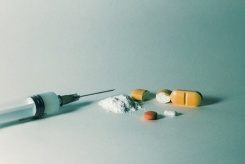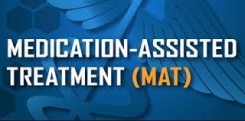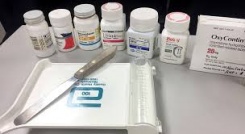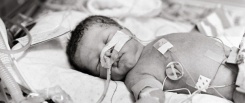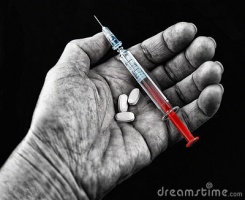To Address the Opioid Crisis, Build A Comprehensive National Framework
Darshak Sanghavi Aylin Altan Christopher Hane Paul Bleicher
January 10, 2018
The annual rate of opioid-related deaths in the United States will surpass the historic peak annual death rates from motor vehicle accidents, HIV infections, and firearms to become the leading cause of death for people less than 50 years of age. The National Vital Statistics System reported roughly 64,000 deaths from drug overdoses in 2016 and year-to-year relative rate increases of more than 20 percent.
Where Multiple Modes Of Medication-Assisted Treatment Are Available
Austin Jones Brian Honermann Alana Sharp Gregorio Millett
January 10, 2018
The opioid epidemic has touched nearly every corner of the United States. Public health officials, lawmakers, and others have recommended a vast scale-up in the capacity of substance abuse treatment in response, especially evidence-backed medication-assisted treatment (MAT).
Read more here: https://www.healthaffairs.org/do/10.1377/hblog20180104.835958/full/
What’s Missing from the National Discussion About the Opioid Epidemic
Jerome Groopman
November 8, 2017
Less than a week after Donald Trump declared America’s opioid epidemic a national public-health emergency, the President’s Commission on Combating Drug Addiction and the Opioid Crisis released its final set of policy recommendations. The panel called on Congress and the White House to consider fifty-six proposals, among them streamlining federal funding for addiction treatment, instituting stricter prison sentences for some opioid traffickers, and launching an “aggressive” TV and social-media campaign to dissuade children and teens from taking the drugs.
Documentary Unveils America’s Pharma-Driven Opioid Crisis and the Heartbreak It’s Causing Families
Dr. Mercola
November 8, 2017
The HBO documentary "Warning: This Drug May Kill You," details the devastating effect America's pharma-driven opioid crisis is having on families and the victims themselves. The film, made by Perri Peltz and Sascha Weiss, features the perspectives of four families whose lives have been ripped apart as a result of opioid and heroin addiction.
FDA May Require Opioids Be Packaged in ‘Blister Packs’
Pat Anson, Editor
November 8, 2017
The Food and Drug Administration may soon require some opioid pain medications to be packaged in “blister packs” to limit the number of pills that can be prescribed and dispensed at one time.
Read more here: https://www.painnewsnetwork.org/stories/2017/11/3/fda-may-require-opioids-be-packaged-in-blister-packs
Born Addicted: The Number of Opioid-Addicted Babies Is Soaring
HANNAH RAPPLEYE, RICH MCHUGH and RONAN FARROW
November 7, 2017
Nationally, the rate of American children born with neonatal abstinence syndrome, a set of symptoms experienced by babies exposed to drugs in the womb, has quadrupled over the past 15 years. In East Tennessee the number of infants born with NAS has skyrocketed, with some counties reporting rates eight times the national average.
The harrowing rise of heroin, in one chart
Dylan Scott
October 9, 2017
There is a popular narrative about the opioid epidemic now killing more than 30,000 Americans a year: People are put on prescription painkillers, maybe after they have an accident or a surgery, and then they get hooked. Sometimes they move on to heroin.
Read more here: https://www.vox.com/policy-and-politics/2017/10/5/16432418/voxcare-rise-of-heroin-one-chart
Federal Action Needed to Address Neonatal Abstinence Syndrome
U.S. Government Accountability Office
October 9, 2017
The rising opioid epidemic has contributed to an increase in the number of babies born with neonatal abstinence syndrome—a withdrawal condition with symptoms including excessive crying and difficulty breathing.
Read more here: http://www.gao.gov/products/GAO-18-32?utm_source=twitter&utm_medium=social&utm_campaign=tr
Opioid epidemic 'getting worse instead of better,' public health officials warn
Michael Collins
October 9, 2017
There were more opioid prescriptions than people in Tennessee in 2015. More people died of opioid overdoses than vehicle accidents, homicide or suicides in 2012. Between 2010-2015, opioid abuse claimed the lives of 6,039 Tennesseans.
Read more here: http://www.tennessean.com/story/news/politics/2017/10/05/opioid-epidemic-getting-worse-instead-better-public-health-officials-warn/732120001/

